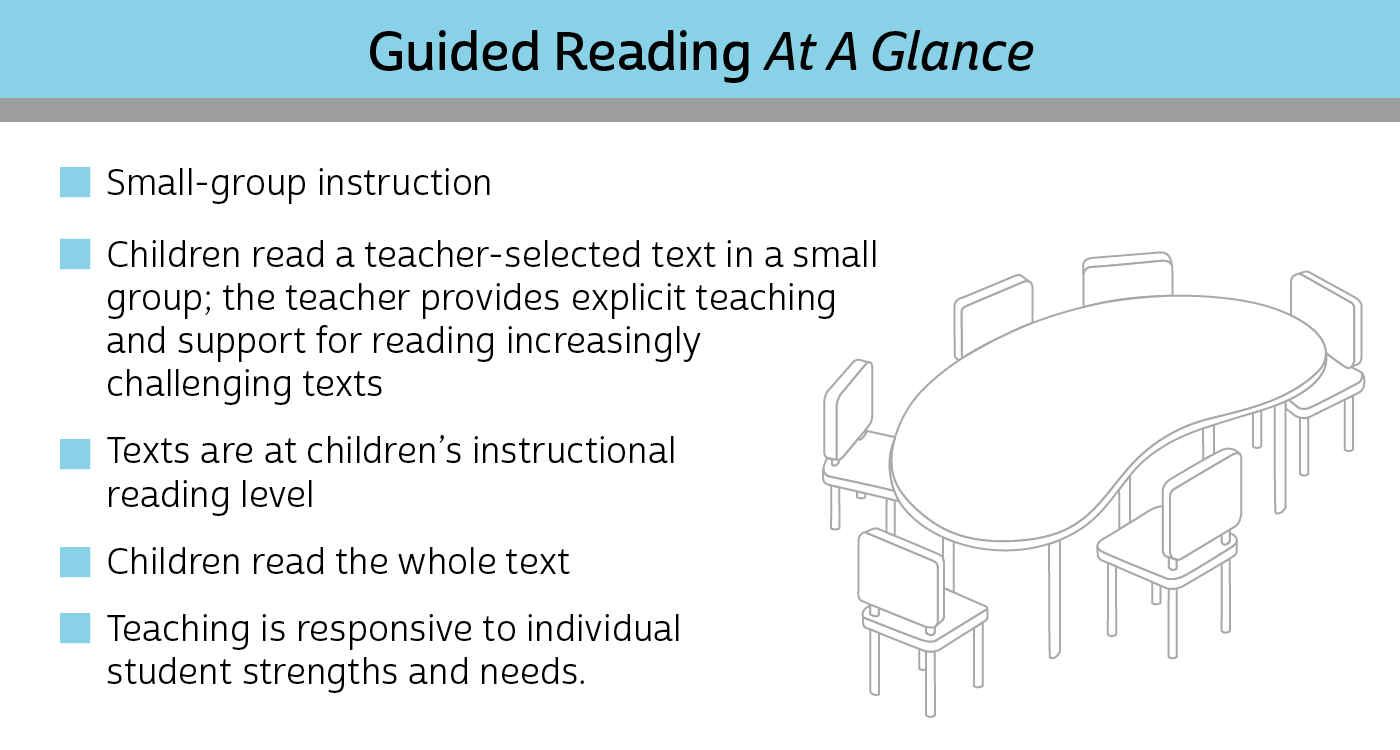What is guided reading?
Guided reading is a small-group instructional context in which a teacher supports each reader's development of systems of strategic actions for processing new texts at increasingly challenging levels of difficulty. During guided reading, students in a small-group setting individually read a text that you have selected at their instructional reading level. You provide teaching across the lesson to support students in building the in-the-head networks of strategic actions for processing increasingly challenging texts. Through guided reading, students learn how to engage in every facet of the reading process and apply that literacy power to all instructional contexts.
 Why is guided reading important?
Why is guided reading important?
As an instructional context, guided reading:
- Supports readers in expanding their processing competencies (in-the-head systems of strategic actions)
- Provides a context for responsive teaching – teaching that is grounded in the teacher's detailed knowledge of and respect for each student, supporting the readers' active construction of a processing system
- Allows students to engage with a rich variety of texts
- Helps students learn to think like proficient readers
- Enables students to read more challenging texts with support.
"In guided reading, you meet students where they are and lead them forward with intention and precision." –Irene C. Fountas and Gay Su Pinnell
What does guided reading look like?
A small group of students who are at a similar point in their reading development are seated across from you at a small kidney-shaped table. Each student reads, softly or silently, the same text individually. You guide a discussion of the text meaning and make teaching points based on your observations of the students' reading strengths and needs.
Steps in the guided reading process:
- Gather information about the readers to identify emphases.
- Select and analyze texts to use.
- Introduce the text.
- Observe children as they read the text individually (support if needed).
- Invite children to discuss the meaning of the text.
- Make one or two teaching points.
- Engage children in letter/word work activity.
- Extend understanding through writing about reading (optional).
- Reflect on the lesson and plan the following lesson.
Becoming an effective teacher of guided reading takes time and effort; but the benefits are worth it. As you teach students, you will have the satisfaction of seeing them apply today what you taught yesterday; you will notice behavioral evidence that they are taking on new understandings; and you will see them expand their competencies and move to higher levels of texts.
To learn more about the Fountas & Pinnell Classroom™ Guided Reading Collection, click the link below.
~The Fountas & Pinnell Literacy™ Team
Check out the entire "What is?" blog series:
- What is Guided Reading?
- What is Interactive Read-Aloud?
- What is Shared Reading?
- What are Reading Minilessons?
- What is Independent Reading?
- What are Book Clubs?
- What is Phonics, Spelling, and Word Study?


